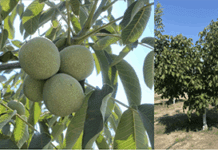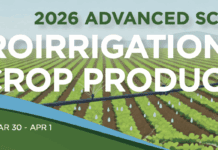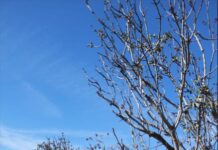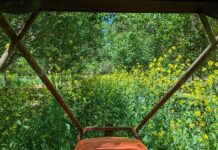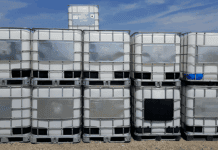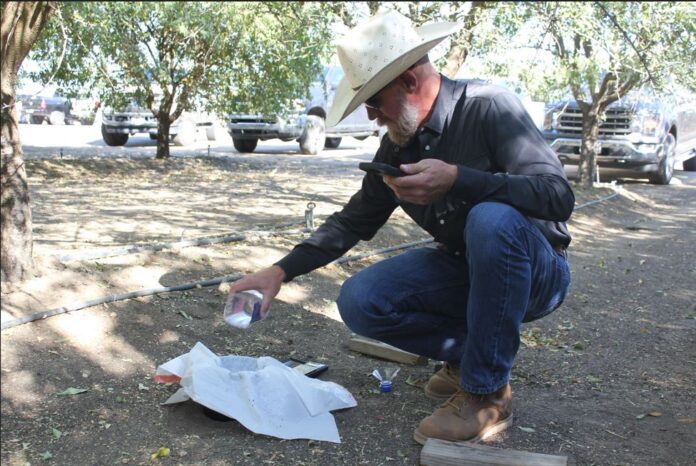
“Trees don’t rest after harvest, they recharge.”
At a grower field day held in a Madera-area almond orchard, California Ag Solutions (CAS) President Silas Rossow said providing adequate “fuel” for tree recharge (rebuilding carbohydrate levels) is critical for crop yield and quality the next growing season. Drought stress and nutrient deficiencies contribute to fewer carbohydrates stored by trees during the growing season, leading to weak and scattered bloom in the spring.
Fuel for recharging carbohydrate levels, he explained, means delivering balanced nutrition of macro- and micronutrients. Improving soil health and irrigating to tree needs enables better uptake of nutrients needed for recharge. Soil testing, leaf analysis and cover crops play a part in improving soil health.
Almonds are the crop, Rossow said, but what is actually being farmed are the spurs. Spurs are what generate yield, and more spurs per lateral foot is the goal. To accomplish that, Rossow said, it is vital to replenish carbohydrates after harvest. Trees have used their stored carbohydrates to produce bloom, leaves and set a crop before the roots even become active. Postharvest is when starches need to begin accumulating in the trees.
Since 2016, the Carbohydrate Observatory has been using grower-provided wood and bark samples from almond, pistachio and walnut trees to be analyzed for sugars and starch. Growers can track the carbohydrate levels in their trees throughout the year with a goal of understanding patterns of starch and soluble sugars in trees to improve management strategies.
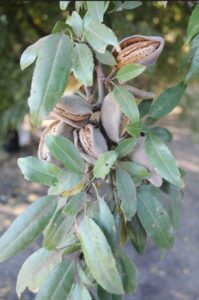
Rossow said knowing your orchard soils and their limitations is where to begin soil improvement. Poor structure and poor infiltration limit the benefits of nutrient applications and water-use efficiency. Limited movement of nutrients invites tree stress and opens the way for diseases. Benefits of good soil structure include providing oxygen for roots and microbes and allowing roots to penetrate deeper and access more nutrients.
CAS team member Martin Herrera explained how cover crops can be used to improve soil health and provide other health benefits in an orchard. A diverse mix of grasses, brassicas, legumes and broadleaf plants as a cover crop can open compacted soils, add organic matter and cycle nutrients. Improving soil infiltration rates can also save water.
Living roots feed soil microbes with sugars to keep them active, and fibrous roots improve soil structure. Cover crops also create biomass, increasing soil organic matter.
By covering the orchard soil, a cover crop can hold soil temperatures down during the summer. A USDA study showed that soil bacteria die at 140 degrees F. At 100 degrees F, only 15% of the moisture available to the plant is used for growth, with the other 85% lost through evaporation and transpiration.
“Think of them as a living tool that prepares the field for your main cash crop,” Herrera said.
Explaining the carbohydrate cycle in trees, Rossow said leaves make sugars through photosynthesis. Those sugars are transported down through the phloem. Enzymes convert the sugars into starch for stable storage. In the spring, those starches are mobilized to fuel bud break and bloom.
Rossow said trees run on nonstructural carbohydrates, or sugars and starches stored in wood, roots and shoots. Early spring growth happens before photosynthesis begins, and trees use the nonstructural carbohydrates for fuel.
Nitrogen is not a substitute for carbohydrate recharge, he noted. Carbohydrates drive energy for growth, and nitrogen drives protein and enzymes. Nitrogen cannot provide energy; it only works if energy from carbohydrates is already available. If carbohydrates are short, Rossow said, the tree can’t even use the nitrogen it has stored.
Key findings about carbohydrates and nutrient storage show an accumulation of 69 pounds of nonstructural carbohydrates during harvest with fully irrigated trees. Stressed trees irrigated to only 50% ET have a 26% reduction in nonstructural carbohydrates per tree. Roots, Rossow noted, are only 13% of an almond tree’s biomass, but they store 36% of the carbohydrates. Severe stress cuts new stem biomass by 50%, reducing future fruiting sites.
The postharvest checklist to begin the refueling process includes irrigation as soon as possible after shaking to prevent premature defoliation and maintain photosynthesis. Overapplying N postharvest, Rossow noted, is a waste of money if carbohydrates are low. Balanced postharvest nutrition with phosphorus, potassium, magnesium, zinc, copper and boron foliar application supports carbohydrate recharge. Stress from pests, mites or salinity should be avoided during the carbohydrate recharge process.
“With every extra pound of carbohydrates stored, there is a higher profit potential,” Rossow said.

Cecilia Parsons | Associate Editor
Cecilia Parsons has lived in the Central Valley community of Ducor since 1976, covering agriculture for numerous agricultural publications over the years. She has found and nurtured many wonderful and helpful contacts in the ag community, including the UCCE advisors, allowing for news coverage that focuses on the basics of food production.
She is always on the search for new ag topics that can help growers and processors in the San Joaquin Valley improve their bottom line.
In her free time, Cecilia rides her horse, Holly in ranch versatility shows and raises registered Shetland sheep which she exhibits at county and state fairs during the summer.




